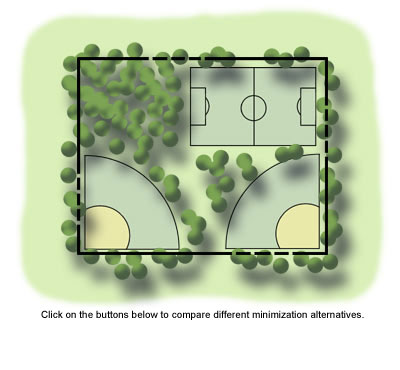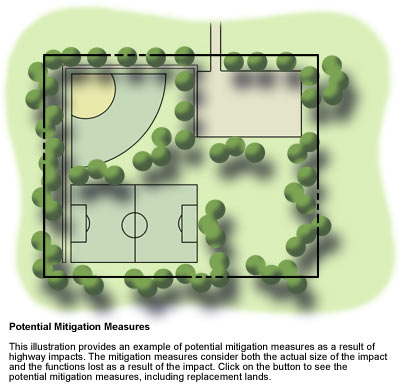Avoidance & Minimization
MINIMIZATION
Once it has been determined that no feasible and prudent avoidance alternative exists, minimization efforts should be pursued. Minimization entails measures to reduce the impact to Section 4(f) properties.
LEAST OVERALL HARM
If multiple alternatives under consideration result in use of Section 4(f) property and no feasible and prudent avoidance alternatives exist, the alternative that will cause the least overall harm (after factoring in mitigation measures) must be selected. The least overall harm is determined by balancing the following factors:
- The ability to mitigate adverse impacts to each Section 4(f) property (including any measures that result in benefits to the property);
- The relative severity of the remaining harm, after mitigation, to the protected activities, attributes, or features that qualify each Section 4(f) property for protection;
- The relative significance of each Section 4(f) property;
- The views of the official(s) with jurisdiction over each Section 4(f) property;
- The degree to which each alternative meets the purpose and need for the project;
- After reasonable mitigation, the magnitude of any adverse impacts to properties not protected by Section 4(f); and
- Substantial differences in costs among the alternatives.
 |
Alternate View |
The alternative selected must include all possible planning to minimize harm as determined through consultation with the official(s) with jurisdiction. Such minimization measures may include (but are not limited to) the following:
- minor alignment adjustments or shifts
- a commitment to off-season construction (no construction on recreational facilities during high use periods)
- reduction of design speed
- retaining walls
- narrowing of typical sections
When considering minimization measures, be sure to note that not all uses of a Section 4(f) resource are necessarily equal. Impacts may vary according to a number of factors, including the following:
- size of use
- location of use
- severity of use
- function of the portion used
- function of the remaining land after use and mitigation
These factors determine the level of impact on a resource. Again, the selected alternative must be the one that causes the least overall harm to Section 4(f) property.
For example, if one alternative impacts only a small corner of a park and another impacts a much larger area along an entire side of the park, the alternative that impacts only the corner must be selected, all other factors being equal and the decision is made in coordination with the officials with jurisdiction. If one alternative catches the edge of a Section 4(f) property and another bisects it, the one on the edge must be selected—again, assuming all other factors are equal and the decision is made in coordination with the official with jurisdiction. If several small portions of a Section 4(f) property are being evaluated and one of them is going to be impacted, the affected portion must be the one with the least severe impact—the one that has open land, for example, rather than a historic house; or a ravine, rather than a baseball field.
In short, not all Section 4(f) properties are equal. Considering the function of each Section 4(f) resource, comparing impacts, and applying reasonable minimization approaches to help minimize harm in light of the balancing factors should determine which alternative is considered the most appropriate.
MITIGATION
After all minimization efforts have been explored, mitigation measures are typically pursued. Mitigation entails measures to compensate for a Section 4(f) impact that cannot be avoided and should be developed in consultation with the official(s) with jurisdiction. Mitigation may entail replacement of land and facilities of comparable value and function, monetary compensation that can be used to enhance the remaining property around a Section 4(f) property, placement of vegetative buffers and screening of the project area, or documentation for educational or interpretive purposes.
Mitigation of historic sites usually entails measures that have been designed to preserve the historic integrity of the site and that have been agreed upon—in accordance with the regulations implementing Section 106 of the National Historic Preservation Act (36 CFR, Part 800).
The cost of mitigation should be a reasonable public expenditure in light of the severity of the impact on the Section 4(f) resource.
 |
Alternate View |
Mitigation should be relevant to the impact and may include one or more of the following measures, as approved by the FHWA:
- Replacement of lands on which there is a Section 4(f) use with lands of at least comparable value, and of reasonably equivalent usefulness and location
- Replacement of facilities impacted by the project, including sidewalks, paths, benches, lights, trees, and other facilities
- Restoration and landscaping of disturbed areas
- Incorporation of design features and habitat features where necessary
- Payment of fair market value for the land
- Any additional measures recommended during consultation with the official with jurisdiction that are relevant to and commensurate with the impacts.
